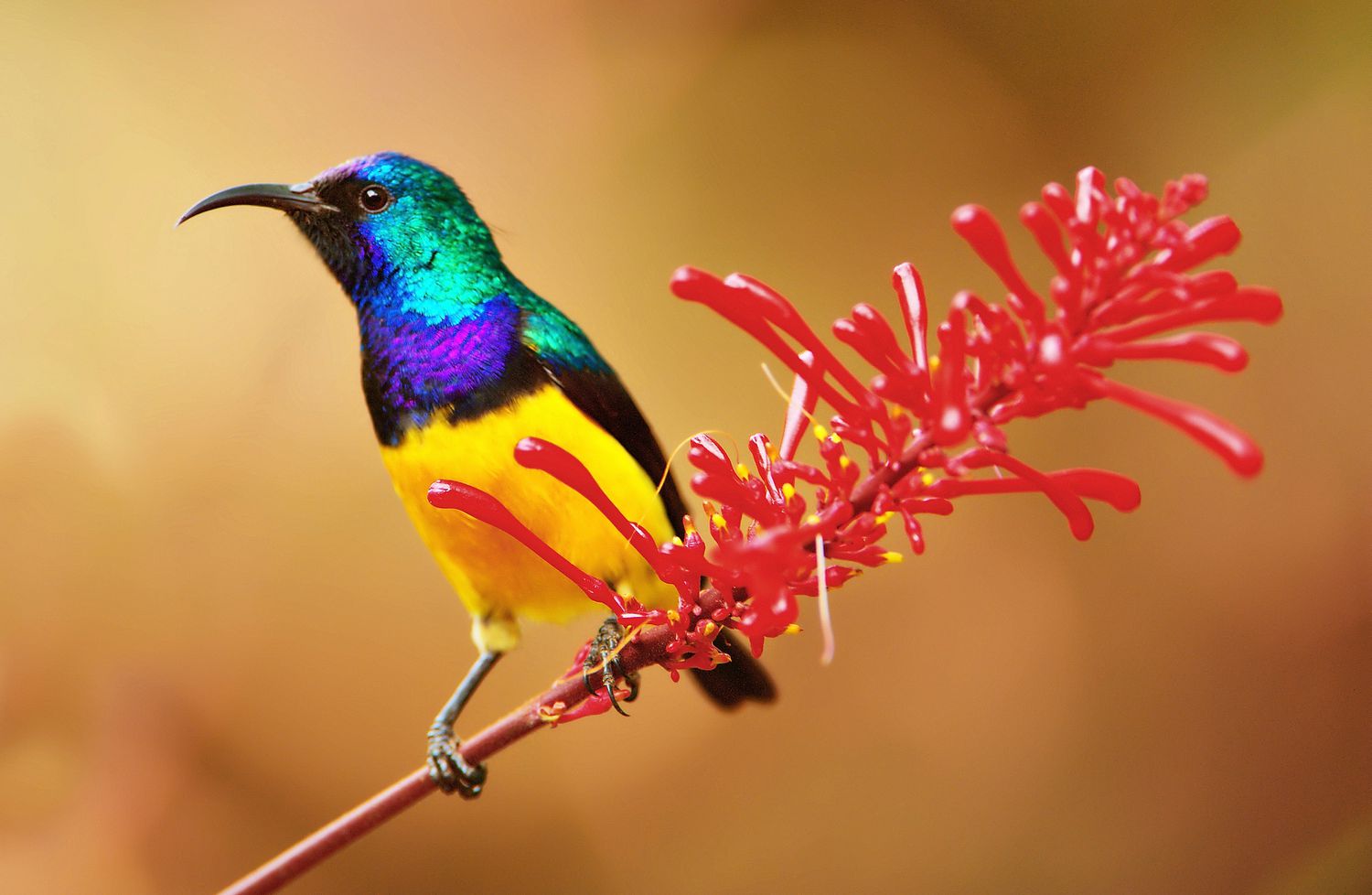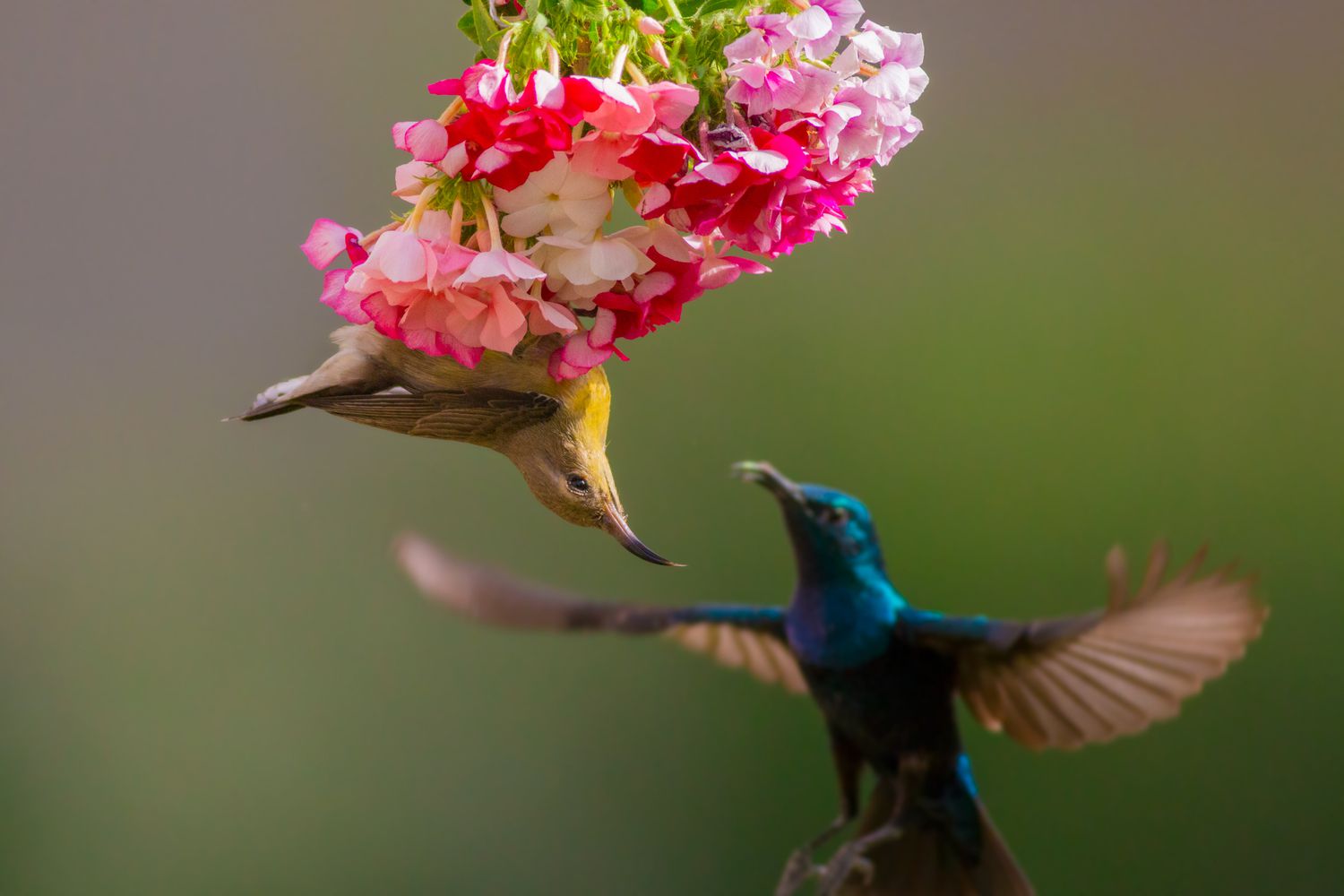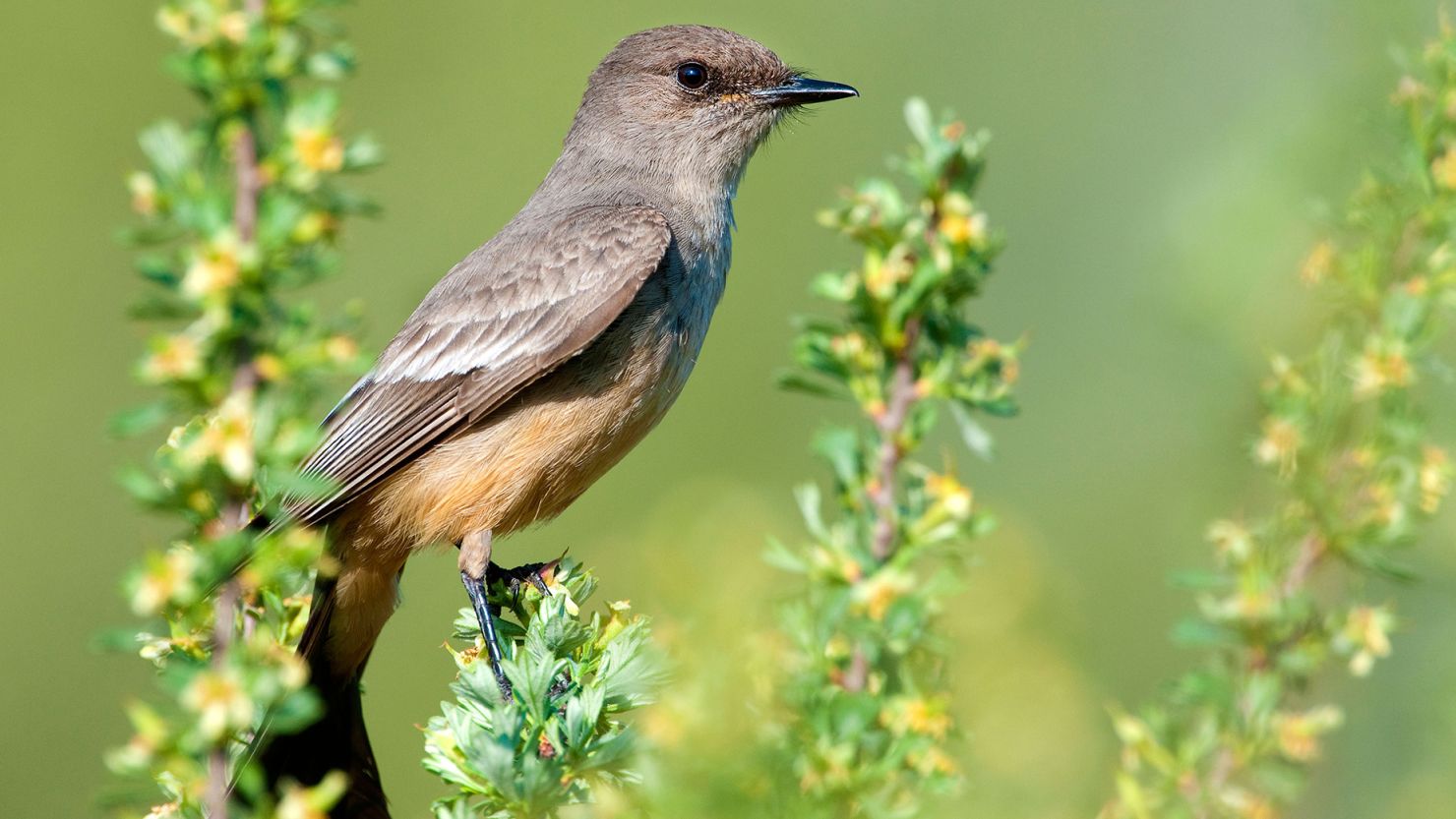
Sunbirds are tropical nectar-sipping birds belonging to the family Nectariniidae. Some members of the family are called “spiderhunters,” but all are considered to be “sunbirds.” Like unrelated hummingbirds, they feed primarily on nectar. However, most sunbirds have curved bills and perch to feed rather than hover like hummingbirds.
Fast Facts: Sunbird
- Scientific Name: Nectariniidae
- Common Names: sunbird, spiderhunter
- Basic Animal Group: Bird
- Size: Less than 4 inches
- Weight: 0.2-1.6 ounces
- Lifespan: 16-22 years
- Diet: Omnivore
- Habitat: Southeast Asia, Africa, northern Australia
- Population: Stable or decreasing
- Conservation Status: Least Concern to Endangered
The Nectariniidae family consists of 16 genera and 145 species. All birds in the family are sunbirds, but those in the genus Arachnothera are called spiderhunters. The spiderhunters are distinct from other sunbirds in that they are larger and both sexes have the same dull brown plumage.
Sunbirds are small, slender birds measuring less than 4 inches in length. The smallest sunbird is the black-bellied sunbird, which weighs about 5 grams or 0.2 ounces. The largest sunbird is the spectacled spiderhunter, which weighs 45 grams or 1.6 ounces. Generally, males are larger than females and have longer tails. Most members of the family have long, downward-curved bills. Except for the spiderhunters, sunbirds are strongly sexually dimorphic. Males often have brilliant iridescent plumage, while females tend to be duller or different colors than males. Some species have distinctive juvenile and seasonal plumage.

Sunbirds live in tropical forests, inland wetlands, savannas, and scrubland in Africa, southern Asia, the Middle East, and northern Australia. They tend not to favor coasts or islands. Some species migrate seasonally, but only a short distance. They are found from sea level to 19,000 feet of elevation. Some species have adapted to live near human habitation in gardens and agricultural land.
For the most part, sunbirds feed on flower nectar. They eat from orange and red tubular flowers and are important pollinators for these species. A sunbird dips its curved bill into a flower or else pierces its base and then sips nectar using a long, tubular tongue. Sunbirds also eat fruit, small insects, and spiders. While hummingbirds hover to feed, sunbirds land and perch on flower stalks.
Sunbirds live in pairs or small groups and are active during the daytime. They aggressively defend their territories from predators and (during the breeding season) other bird species. Sunbirds tend to be talkative birds. Their songs consists of rattles and metallic-sounding notes.
Outside of the equatorial belt, sunbirds breed seasonally, usually during the wet season. Birds that live near the equator may breed any time of year. Most species are monogamous and territorial. A few species engage in lekking, where a group of males gather to put on a courtship display to attract females.
Female sunbirds use spiderwebs, leaves, and twigs to build purse-shaped nests and suspend them from branches. However, spiderhunter nests are woven cups attached beneath large leaves. The female lays up to four eggs. Except for spiderhunters, only sunbird females incubate the eggs. Purple sunbird eggs hatch after 15 to 17 days. Male sunbirds help rear the nestlings. Sunbirds live between 16 and 22 years.

The IUCN classifies most sunbird species as “least concern.” Seven species are threatened with extinction and the elegant sunbird (Aethopyga duyvenbodei) is endangered. Populations are either stable or decreasing.
Threats to the species include habitat loss and degradation from deforestation and human encroachment. The scarlet-chested sunbird is considered an agricultural pest, as it spreads parasitic mistletoe in cocoa plantations. Although sunbirds are stunningly beautiful, they are not typically captured for the pet trade because of their specific nutritional needs.






